National Historic Landmarks (NHLs) are historic places that commemorate or illustrate the history of the United States. There are over 2,600 NHLs across the country. Join us for a look at Arizona’s 46 National Historic Landmarks with a spotlight on Tucson’s Mission San Xavier del Bac.
Disclosure: This post contains affiliate links. If you buy something from one of our affiliates, we receive a small commission at no extra charge to you. Thanks for helping to keep our blog up and running!
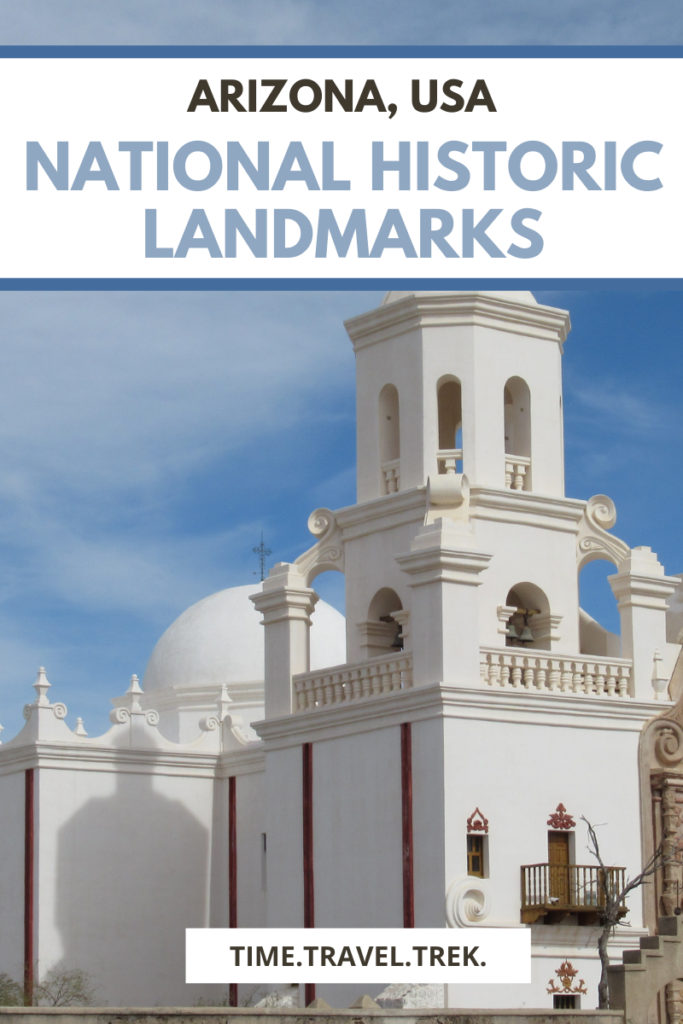
Table of Contents
What are National Historic Landmarks?
The previous post focused on visiting Arizona’s National Monuments in Spring. Let’s keep it going and look at National Historic Landmarks while we’re there.
So, what exactly are NHLs?
National Historic Landmarks are historic places of value that commemorate or illustrate the history of the United States. Across the country, there are close to 2,600 NHLs. Of course NHLs are not all the same. They are buildings, sites, structures, objects, or districts.
Most NHLs are not owned by the federal government. In fact, private citizens, organizations, corporations, tribal entities, state and local governments own around 84% of all American NHLs. Even so, NHLs and national park units sometimes overlap. For example, there are seven National Historic Landmarks within Grand Canyon National Park alone.
In order to receive designation, according the NPS National Historic Landmarks, a site must fit one of the following criteria:
- First, it is a location with the strongest association with a turning point or significant event in American history.
- Secondly, it could be the best location to tell the story of an individual who played a significant role in U.S. history.
- Thirdly, it is an exceptional representation of a particular building or engineering method, technique, or building type in the country.
- And finally, it offers potential for future archaeological studies to provide new and innovative information about the past.
It’s important to note from the outset that even though a site may be a designated National Historic Landmark, it may not be open to the public. Property owners have the right to decide whether or not people can visit the site.
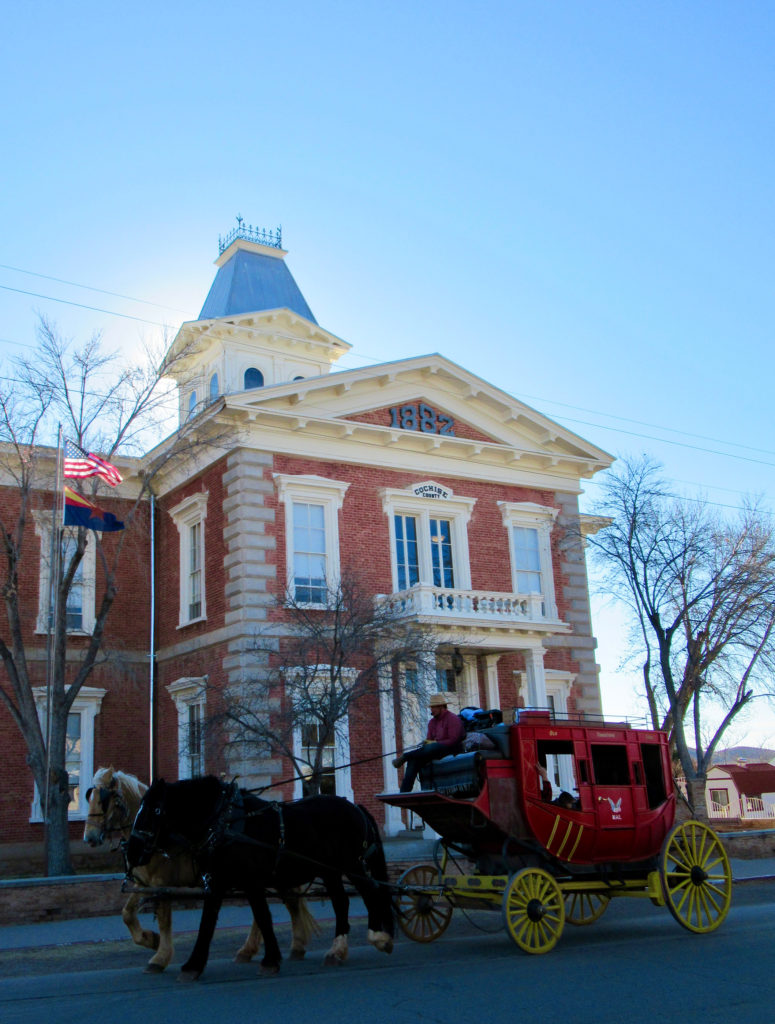
How Many National Historic Landmarks in Arizona?
There are 46 National Historic Landmarks (NHLs) in Arizona. Who knew? I certainly didn’t before diving into research for future historic sites to visit. Forty-six! This includes the Hoover Dam which spans from Nevada into Arizona. It also includes Yuma Crossing and Associated Sites which overlap into California.
Arizona’s NHLs by Year of Designation
1960
San Xavier del Bac Mission
Hubbell Trading Post
1961
Double Adobe Site
1964
Ventana Cave
Snaketown
Awatovi Ruins Casa Malpais Site
Gatlin Site
Kinishba Ruins
Old Oraibi
Point of Pines Sites
Pueblo Grande Ruin and Irrigation Sites
San Bernardino Ranch
Sierra Bonita Ranch
Winona Site
1965
Desert Laboratory
Lowell Observatory
Merriam, C. Hart, Base Camp Site
1966
Jerome Historic District
Yuma Crossing and Associated Sites (also in California)
1967
Lehner Mammoth-Kill Site
1976
Fort Huachuca
1982
Taliesin West
1983
Phelps Dodge General Office Building
1985
Hoover Dam (also in Nevada)
1987
Colter, Mary Jane, Buildings
The Grand Canyon Depot
Grand Canyon Lodge
G.C. Park Operations Building
Grand Canyon Power House
El Tovar
Tumacacori Museum
1990
Mission Los Santos Angeles de Guevavi
San Cayetano de Calabazas
1994
Air Force Facility Missile Site 8 (Titan II ICBM Site 571-7)
1997
Grand Canyon Village
2004
Navajo Nation Council Chamber
2009
Sage Memorial Hospital School of Nursing, Ganado Mission
2012
Fort Apache and Theodore Roosevelt School
Murray Springs Clovis Site
Poston Elementary School, Unit 1, Colorado River Relocation Center
2014
1956 Grand Canyon TWA-United Airlines Aviation Accident Site
2016
Painted Desert Community Complex
Are NHL Designations Ever Withdrawn?
Yes. Sometimes changes are made to a property. The can completely alter its character. When a designated site is changed so much that it no longer has national significance, its status is removed. Changes through alteration, addition or demolition are the most common reasons for withdrawal of Landmark designation.
Arizona’s Roosevelt Dam was designated a National Historic Landmark in 1963. It was the world’s highest masonry dam when it was completed in 1911. In 1984, modifications were approved to meet current safety and flood control standards. As a result, the original rubble-masonry gravity arch dam was covered with a new concrete block structure. This increased the dam’s height and length. Because it no longer had the same design, same material and overall feeling, the Landmark designation of Roosevelt Dam was withdrawn in 1999.
Spotlight on Arizona’s 1st National Historic Landmark
San Xavier del Bac – it glows like a beacon shimmering in the dry heat of the desert. I haven’t discovered nearly as many of Arizona’s NHLs as I have Arizona’s National Historic Monuments. Yet. At this point though, San Xavier del Bac is my favourite.
Oddly enough, “del Bac” means where the water meets the land. You’d never guess it today, but a river flowed through this parched landscape in the 1600s. Native communities grew corn, beans, squash and cotton. Ground mesquite pods were ground into flour.
Father Kino was a Jesuit priest who founded many missions in northern Mexico. In 1692, he arrived in the Tucson area and founded Mission San Xavier del Bac. Eight years later, he began to build a foundation for a church. It was never finished. In 1756, a church was finally built at the mission. Construction on the current church we see today began in 1783.
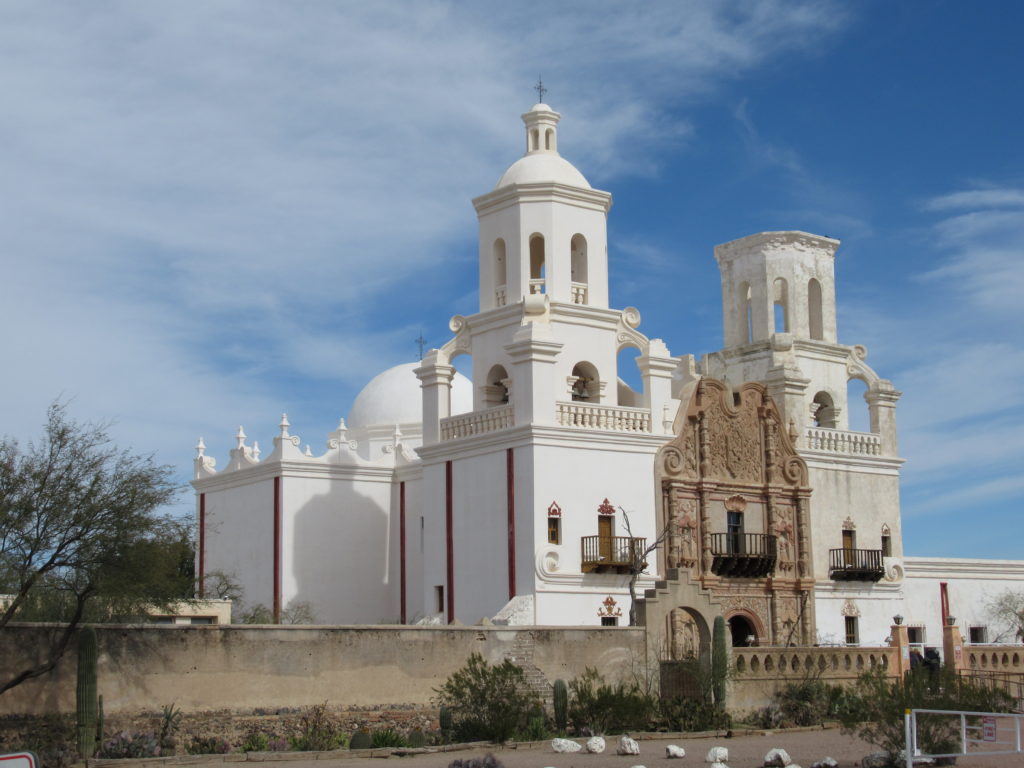
Touring San Xavier del Bac
You’re free to wander around the church and grounds on your own – like we did the first time we visited. It provides a good overview. However, if you really want to understand the iconography and stories behind this mission, take a free guided tour.
I arrived and went into the reception desk and asked for a tour. The woman asked me to wait out in the courtyard for Susan. Two other people showed up and stood nearby. Our guide, Susan, came out and introduced herself. She began with an overview of the mission’s history. Missionaries introduce citrus trees, pomegranates and winter wheat. They bring sheep, horses and cows. Kilns fire building bricks. Prickly pear juice in mortar draws out moisture. These historic tidbits aren’t visible when you tour on your own – and yet they provide such a wealth of understanding.
Looking Beyond the Obvious
With Susan’s guidance we saw the influence of Islamic architecture in the design. We learned that the entrance faces south because this is where the majority of people come from. Learned that the lions are symbols of Spain. Of course, the main door is mesquite wood. Appreciated the fact that the handles on that same door were added in the 1930s. The snake motif of those handles is symbolic. Snakes lead people to water.
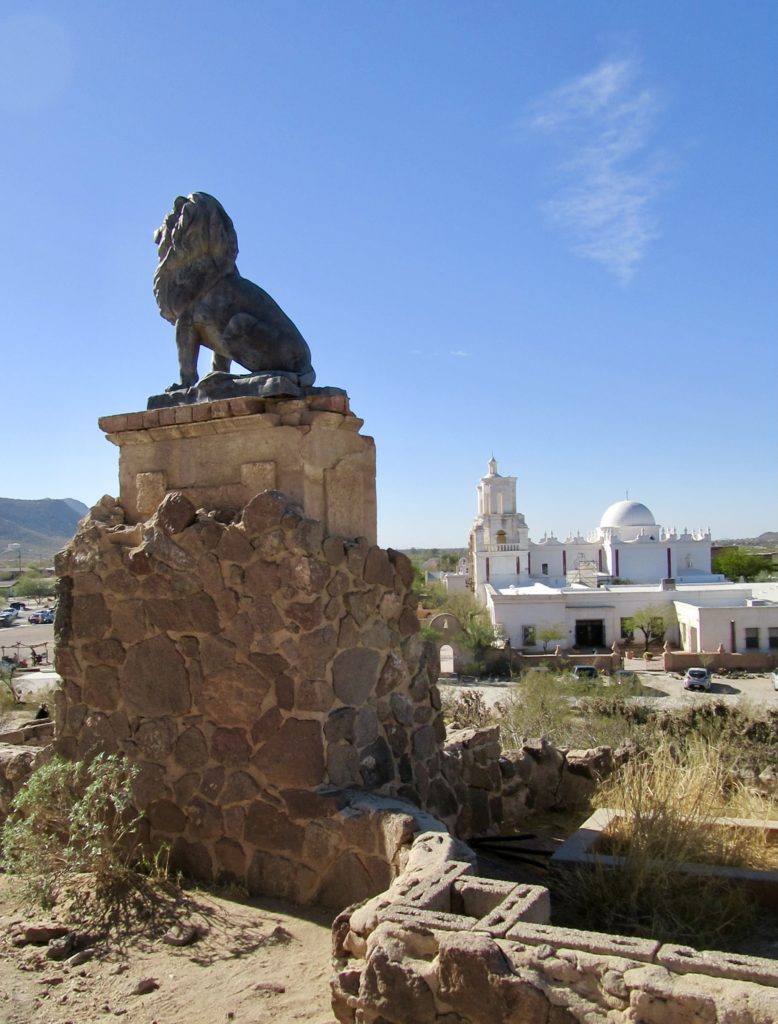
The rainbow painted above the door comes after summer thunderstorms replenish the desert. Of course, the Baroque architecture relies on balance. Because a door couldn’t be added, one was painted. We also looked closely are the milagros – little charms, bracelets and tokens left behind by those asking or saying thanks for miracles from the saints. Milagro means “miracle” in Spanish.
But it’s no miracle that this beacon in the desert became the first designated national historical landmark in the state on October 9th, 1960. It is one of the oldest standing European structures in the country. San Javier del Bac has a special story worth getting to know.
Special note: As a result of the Pandemic, be sure to visit the Mission San Javier del Bac website for current information on any related COVID-19 closures and/or tour cancellations.
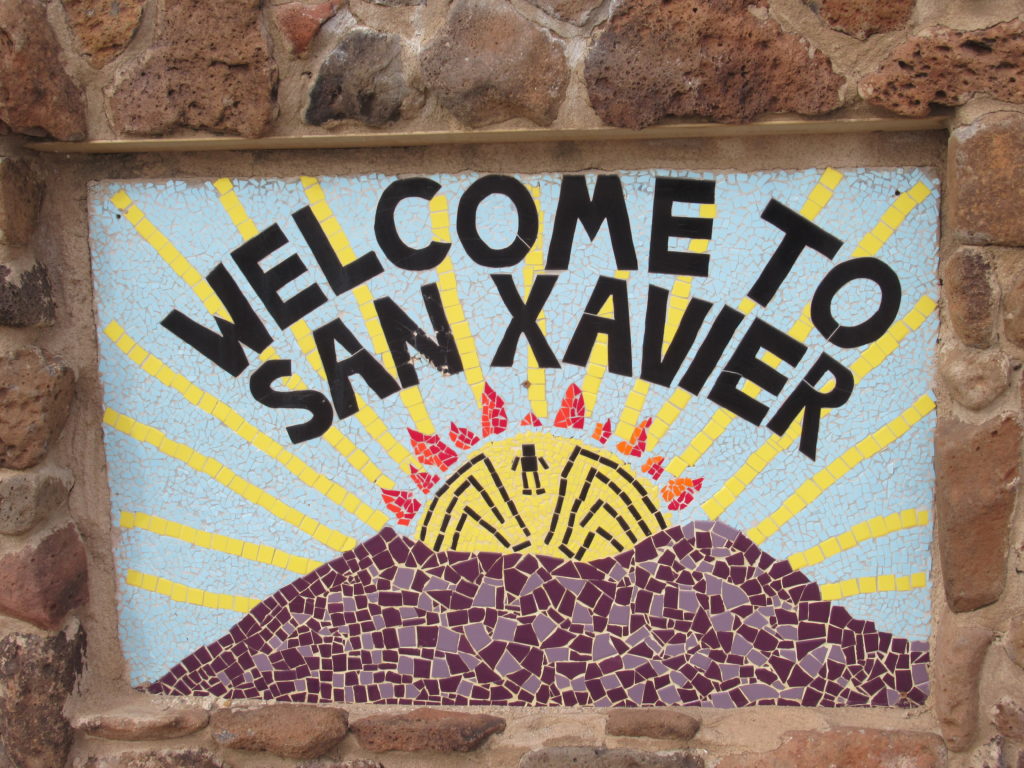
For More Information
Of course if you want to see a list of all of the U.S. National Historic Landmarks by State, you can find it at the NPS website here.
PIN THIS POST FOR FUTURE REFERENCE!
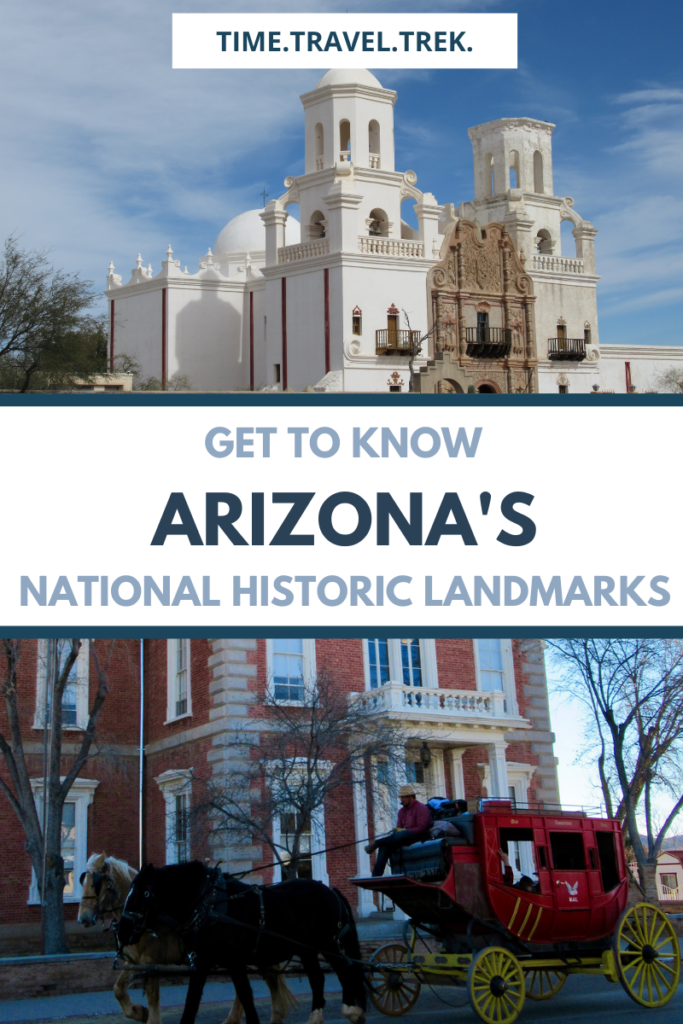
P.S. If you’re looking for other adventures in Arizona, check out these posts:
The Civilian Conservation Corps at Arizona’s Colossal Cave
Exploring Arizona’s Empire Ranch














Leave a Reply